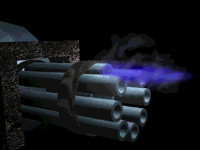|
Basic Clan Terms
Aff/Neg
Affemtivie and Negitive answers to said question
BLOODNAME
Bloodname refers to the surname of each of the 800 Warriors who stood with the Great Eagle. These 800 are the foundation of the Clans' elaborate breeding program. The right to use one of these surnames has been the ambition of every Clan warrior since the system was established. Only 25 warriors, which corresponds to 25 Bloodrights, are allowed to use any one surname at one time. When one of the 25 Bloodnamed warriors dies, a trial is held to determine who will assume that Bloodname. A contender must prove his Bloodname lineage, then win a series of duels with other competitors. Only Bloodnamed warriors are allowed to sit on the Clan Councils or are eligible to become a Khan or ilKhan. Most Bloodnames have gradually been confined to one or two warrior classes, however, certain prestigous names, have shown their genetic value by producing excellent warriors in all classes. Bloodnames are determined matrilineally, at least after the original generation. Because a warrior can only inherit from his or her female parent, he or she can only have a claim to one Bloodname.
CODEX
Each Warrior;s codex is his or her individual identification. It includes the names of the original Bloodnames warriors from which a warrior is descended. It also includes his generation number, Blood House, and codex ID, an alphanumeric code nothing the unique aspects of that persons's DNA. See also Master Codex.
DEZGRA
A fighting unit that disgraces itself is known as a dezgra unit. The name also refers to the ritual whereby that unit is marked and punished. Any unit that refuses orders, panics in the face of the enemy, or takes dishonorable action is disgraced. The unit warriors are given a choice: immediate execution or the dezgra, "disgraced expulsion."
*(In pre-invasion days, dezgra warriors who chose to live were sent to one of several marginally habitable planets and left to survive or die on their own. After five years, the survivors were allowed to return, but without any guarantee of acceptance back into society. Some dezgra units have hired themselves out as mercenaries. It is highly unlikely that any Clan will accept a dezgra unit after is has served for five years as a mercenary unit, because Clan warriors consider mercenaries below even th lowest caste. Dezgra units must, by Clan law, remove all Clan markings from their weapons and uniforms and wear what historians would immediately recognize as the crest of the hated Amaris family.)*
KHAN
Each Clan elects two leaders, or Khans. One serves as the Clan's senior military commander and bureaucratic administrator.
ILCHI
Represinitive of a clan in councle affairs
ILKHAN
In times of great internal or external threat, or when a coordinated effort is required of all Clans, an ilKhan is chosen to serve as supreme ruler of the Clans.
LOREMASTER
The Loremaster is the keeper of Clan laws and history. The position is honorable and politically powerful. The Loremaster plays a key role in inquiries and trials, where he is often assigned the role of Advocate or Interrogator.
QUIAFF/QUINEG
These expressions are placed at the end of rhetorical questions. If an affirmative answer is expected, quiaff is used. If the answer is expected to be negative, quineg is the proper closure.
SAKHAN
He or she is second-in-command, carrying out duties assigned by the first Khan. The second, or junior Khan is also known as the saKhan.
ToB
Trial of Blood
ToE
Trial of Entrance
ToP
Trial of Possition
ToR
Trial of Refusal
|
 |